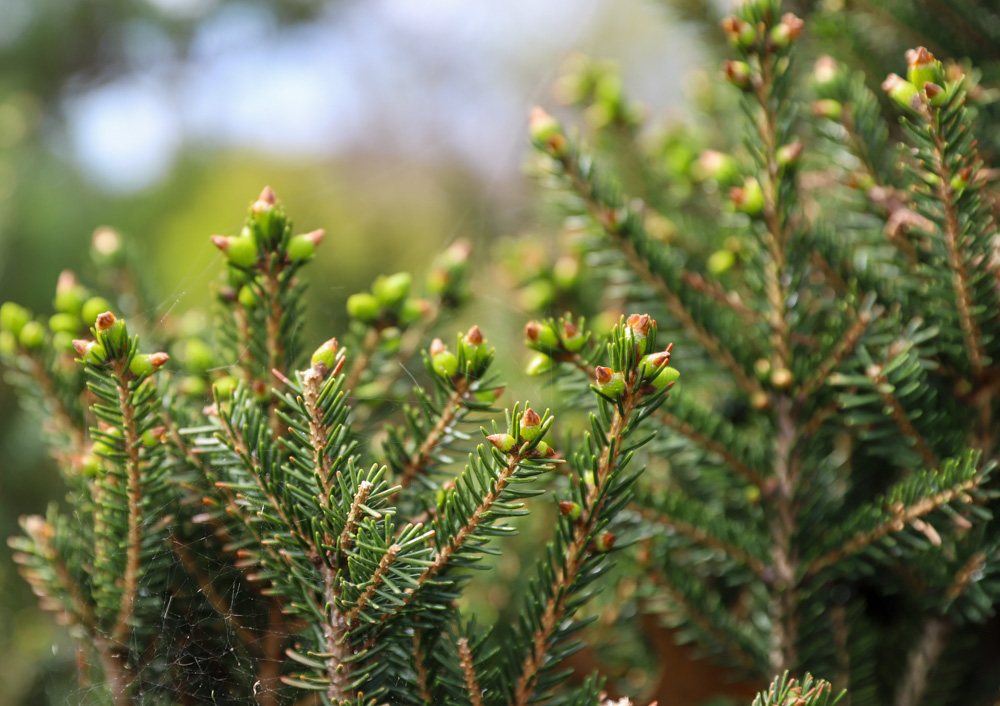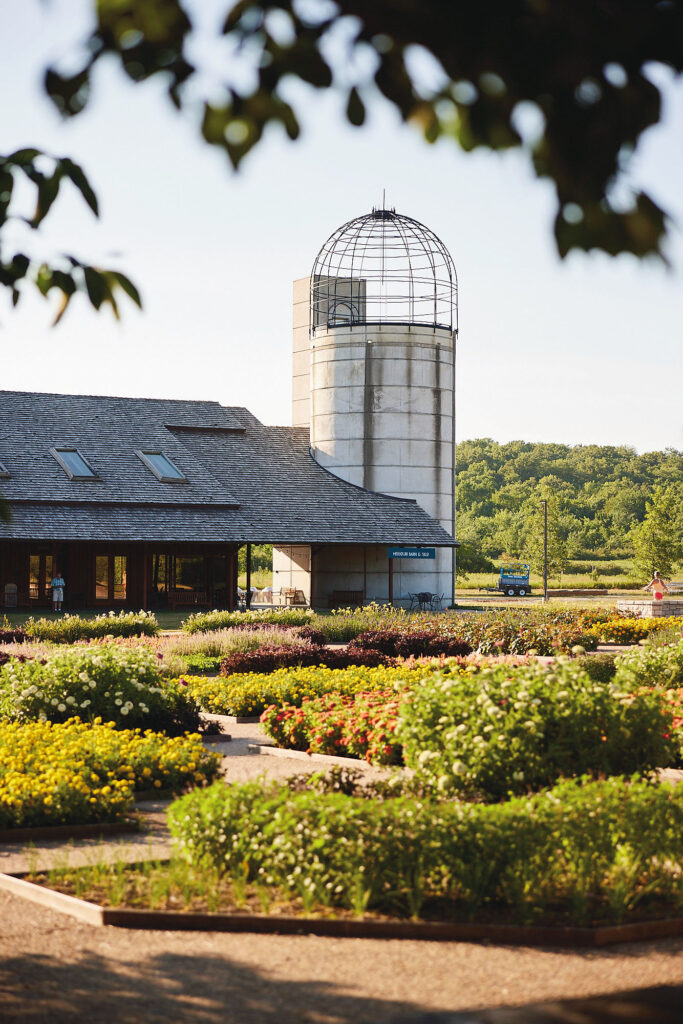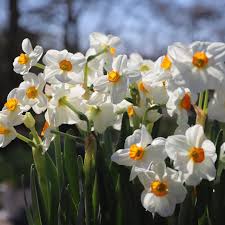
Powell Gardens has been Kansas City’s botanical garden since 1988. Each year, Powell Gardens welcomes those who live and visit the Kansas City area to experience the rich beauty of our collections and Midwest landscape. Visitors will find display gardens, nature trails, notable architecture, and native plants.
What is a botanical garden?
The American Public Garden Association (APGA) defines a public garden as “an institution that maintains plants for the purposes of public education and enjoyment, in addition to research, conservation, and higher learning.” A botanical garden has a documented collection of living plants. These plants are used for scientific research, conservation, display, and education.
Powell Gardens’ mission is to be an experience that embraces the Midwest spirit of place and inspires an appreciation for the importance of plants in our lives.
Powell Gardens’ doors are open to the public from March-December. During this time, there are opportunities to engage with our living collections and participate in educational classes. There are rotating festivals and horticulture displays. Throughout the year, Powell Gardens and its managed lands are a resource for research groups and an avenue for conservation.
The History of Powell Gardens
As Kansas City’s Botanical Garden, Powell Gardens plays a vital role in the community as a space for release, rejuvenation, and the celebration of the fleeting nature of nature itself. Established in 1988, Powell Gardens is a non-profit public garden. Powell Gardens maintains 970 acres of lush, rolling hills and windswept meadows, with more than 175 acres and a large collection of plants open to the public for education, exploration, and recreation. Many of the plants in the Gardens are regionally native, and all highlight the changing seasons within the Midwest spirit of place.
Powell Gardens began in 1948, when George E. Powell, Sr., a prominent Kansas City businessman, acquired the beautiful tract of land that is now Powell Gardens.
George E. Powell, Sr.
Mr. Powell learned firsthand about the harsh and unpredictable life of farming during his childhood on the family farm. In 1917, he left to pursue a business career in Kansas City. He, along with his son George Powell Jr., and others, took over ownership of Yellow Transit Freight Lines, now YRC Worldwide, in 1952. Throughout his successful business career, Mr. Powell never lost interest in the lands of Missouri. He, his family, and friends enjoyed many weekends on his farm in Johnson County, Missouri.
In 1969, in keeping with his stewardship philosophy, Mr. Powell donated the 640-acre farm to the Kansas City Area Council of the Boy Scouts of America, who used it as a regional camp until 1984.
In 1984, with the University of Missouri’s School of Agriculture as a catalyst and partner, the Powell Family Foundation began developing a horticultural and natural resource facility called Powell Center. As a part of this development, Powell Center retained Pittsburgh, Pennsylvania-based Environmental Planning and Design, the leading U.S. consultants for botanical gardens. The firm recognized that the site would be ideal for development as a botanical garden.
Kansas City’s Botanical Garden Begins
In 1988, official ties with the University of Missouri ended and Powell Gardens Inc., a not-for-profit organization, was established. A 19-member board of directors, in which several Powell family members serve, governs Powell Gardens. (The Friends of Powell Gardens Board was a separate organization with its own Friends of Powell Gardens Board members until the mid-2000s.)
Staffing at the Gardens fluctuates between 35 employees during off-season and close to 70 in peak season. Powell Gardens is a 501(c)3 public charity, supported through private donations, admission, memberships, gift shop purchases, and rental revenues.
Major Milestones
- 1988 Powell Gardens opens to the public as a botanical garden.
- 1991 Perennial Garden opens.
- 1993 David T. Beals III Woodland and Stream Garden opens (originally named the Rock & Waterfall Garden).
- 1995 Meadow Pavilion opens.
- 1996 Marjorie Powell Allen Chapel opens.
- 1997 Visitor Education Center opens.
- 2001 Marlese Lowe Gourley Island Garden opens.
- 2002 Garden Gatehouse opens.
- 2006 Fountain Garden opens.
- 2009 Heartland Harvest Garden opens.
Living Collections
Since its beginning, Powell Gardens has been committed to caring for botanical collections. Plant collections provide an invaluable resource for the conservation of plants, both regionally and globally. Powell Gardens’ staff mindfully stewards our diverse plant collections now while preserving plant diversity for generations to come. Powell Gardens’ collections include both native and non-native plants.
Plant Collections at Powell Gardens
Powell Gardens is a living museum with a rapidly growing collection. With more than 21,000 plants on record by the end of 2020, Powell Gardens has amassed data that is important for long-term planning and as a reference tool. Through a grant in 2020, the Powell Gardens’ collection moved to a platform allowing public access. Explore our living collection, features, and garden tours online with Garden Explorer.
With a common goal of protecting native plants by ensuring that native plant populations and their communities are maintained, enhanced, and restored, Powell Gardens is a nonfederal cooperator of the Plant Conservation Alliance.
Collections of Note
Other collections of note include dogwoods, native trees and shrubs, rock plants, daylilies, and bearded iris.
- Orchid Delirium, a spring exhibition at Powell Gardens, showcases select blooms from a 2,000-piece orchid collection highlighting the natural habitats in which the flowers are found.
- Powell Gardens’ magnolia collection has been certified by the American Public Gardens Association’s North American Plant Collections Consortium (NAPCC). This collection is named in honor of past Director of Horticulture, Alan Branhagen. Some of the magnolias in the collection can be found along the Dennis and Annette Young Magnolia Walk by the Visitor Center.
- The Conifer Garden is certified as a Reference Garden by the American Conifer Society.
- The lotus and waterlily collections have been designated as certified collections by the International Waterlily and Water Gardening Society.
- Powell Gardens is an affiliated garden for the Hardy Fern Foundation.
- Under the direction of University of Missouri – Kansas City Professor Tamas Kapros, Ph. D. and team, a digital herbarium was created.
Visiting a Botanical Garden
A botanical garden like Powell Gardens provides an up close and personal experience with the natural world. Engage with plants through an on-site visit, enrolling in a class, taking a digital collections tour, participating in conservation efforts, or donating to Powell Gardens. When planning your visit to Kansas City, don’t forget to include Powell Gardens!
You can follow Powell Gardens online on Facebook, Instagram, TikTok, and Twitter. Sign up for our email list to stay connected all year long!
Non-profit botanical gardens like Powell Gardens rely on community support to continue our mission. From engaging with plants through exhibitions or festivals to enrolling in class, to volunteering time and donating treasure, there are countless ways to become an active participant in our work.
Related Posts



